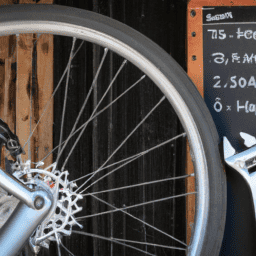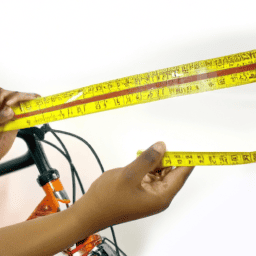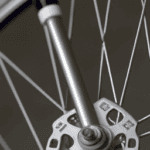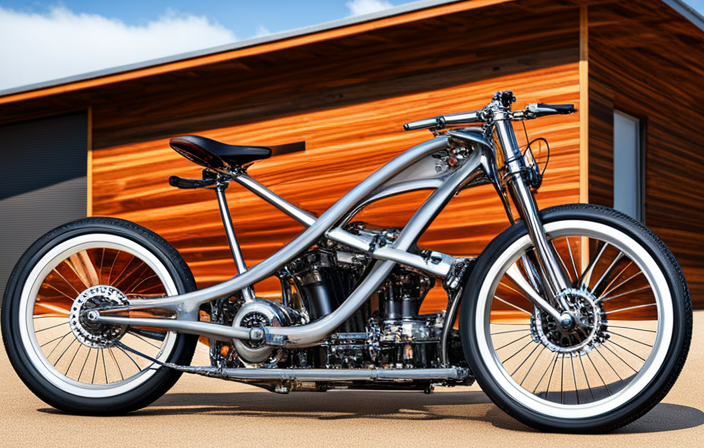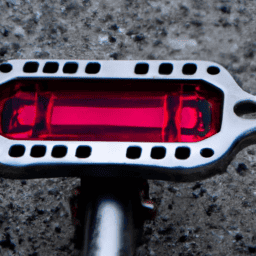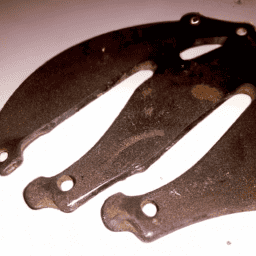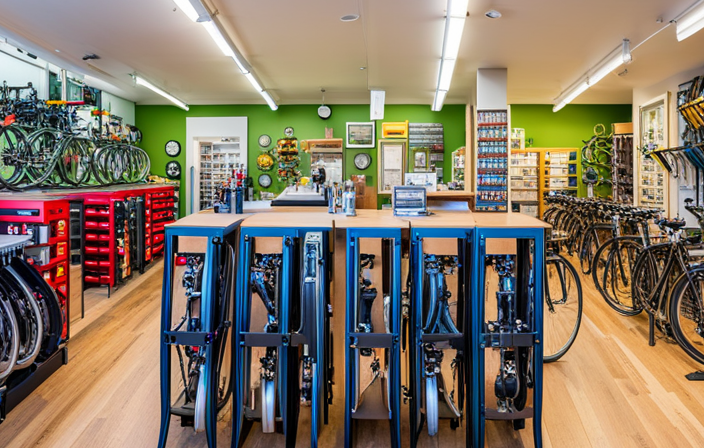Ensuring your bicycle stays in optimal condition requires a tune-up, which is essential for its smooth and efficient operation. However, what is the anticipated cost for this maintenance? The price for a bike tune-up can differ based on various elements such as the service quality and the geographic placement of the bicycle store.
While some may view a bicycle tune-up as an unnecessary expense, the truth is that neglecting this vital maintenance can lead to more costly repairs down the road. As an avid cyclist myself, I understand the importance of a proper tune-up and the impact it can have on the overall performance of a bike.
In this article, we’ll explore the factors that affect the cost of a bicycle tune-up, the average cost of a basic tune-up, additional services that can increase the cost, and how to save money on this essential service.
Key Takeaways
- A bicycle tune-up is important to ensure smooth and efficient performance and can prevent costly repairs.
- The cost of a basic tune-up ranges from $50-$100 and can vary based on bike type, service level, and location.
- Additional services such as wheel truing, brake adjustment, and bike cleaning can increase the cost.
- DIY maintenance and alternative repair options such as community repair nights can save money, and some bike shops offer discounts or loyalty programs for regular customers.
Understanding the Basics of a Bicycle Tune-Up
So, you wanna know how to get your bicycle running smoothly with a tune-up, huh? Well, let me break down the basics for ya.
A bicycle tune-up typically involves several common procedures that aim to improve the bike’s performance, safety, and longevity. Some of the most common tune-up procedures are adjusting the brakes, derailleurs, and headset, lubricating the chain and other moving parts, truing the wheels, and checking and tightening bolts and screws. These procedures can be done by a professional mechanic or by the bike owner with some DIY maintenance skills and the right tools.
If ya choose to do the tune-up yourself, ya will need to have some basic knowledge about how your bike works and what parts need attention. Ya can find many resources online or in books that explain how to perform each procedure step by step. It’s also important to have the right tools, such as a set of Allen wrenches, a chain lubricant, a spoke wrench, and a bike stand or a clamp. By doing the tune-up yourself, ya can save money and learn more about your bike’s maintenance needs. However, if ya ain’t confident about your skills or if your bike needs more advanced repairs, it’s best to take it to a professional mechanic.
Now that ya have a better idea of what a bicycle tune-up involves, let’s move on to the factors that affect the cost of a tune-up.
Factors That Affect the Cost of a Bicycle Tune-Up
You might be surprised to learn that the cost of a bike tune-up can vary depending on several factors, such as the type of bike you have and the level of maintenance it needs.
Another factor that affects the cost of a bicycle tune-up is the turnaround time. If you need your bike tuned up in a hurry, you may have to pay extra for expedited service. On the other hand, if you can wait a few days or even a week, you may be able to save some money on the cost of the tune-up.
Geographical location is also a factor that can affect the cost of a bicycle tune-up. In general, bike shops in urban areas tend to charge more for tune-ups than those in rural areas. This is partly because the cost of living is higher in cities, but it’s also because bike shops in urban areas tend to have more overhead costs.
However, even within a particular city or region, the cost of a tune-up can vary depending on the specific shop you choose. With these factors in mind, let’s take a look at the average cost of a basic bicycle tune-up.
Average Cost of a Basic Bicycle Tune-Up
When it comes to the average cost of a basic bicycle tune-up, there are a few key points to keep in mind.
First, the cost range can vary depending on the bike shop and location. On average, you can expect to pay anywhere from $50 to $100 for a basic tune-up.
This typically includes adjustments to the brakes, gears, and wheels, as well as a general cleaning and lubrication of the bike.
Cost Range
The cost range for a bicycle tune-up can vary depending on the bike shop and location. Comparing prices and finding deals is important to ensure you’re getting the best value for your money.
Generally, a basic tune-up can cost anywhere from $50 to $100, while a more comprehensive tune-up can range from $100 to $200. Factors that can affect the cost of a tune-up include the type of bike, the level of service needed, and the condition of the bike.
For example, a mountain bike may require more work than a road bike due to the rough terrain it’s used on. Additionally, if your bike has been sitting unused for a long period, it may need more work to get it back in shape. It’s important to communicate your needs clearly with the bike shop to ensure you’re getting the appropriate level of service for your bike.
When it comes to bicycle tune-ups, it’s important to know what’s included in the service to understand the value you’re receiving.
What’s Included
Wondering what’s included in a bike tune-up? Let’s break it down. A bike tune-up typically includes four main components:
- Adjusting the gears and brakes to ensure they are working properly and preventing wear on the bike’s drivetrain and braking system.
- Lubricating the chain and other moving parts to prevent wear and keep the bike running smoothly.
- Truing the wheels by adjusting the spokes to ensure they are spinning straight, which can prevent unnecessary wear and tear on the tires.
- Inspecting the bike for any potential safety issues, such as loose bolts or worn out parts, and recommending any necessary maintenance tips to keep the bike running safely and efficiently.
Additional services that can increase the cost of a bike tune-up may include replacing worn out parts, such as brake pads or tires, or cleaning and detailing the bike. However, by regularly getting a bike tune-up and following recommended maintenance tips, you can prevent costly repairs and extend the life of your bike.
Additional Services That Can Increase the Cost
Opting for supplementary services during a bicycle tune-up, such as wheel truing or brake adjustments, may raise the overall cost. These additional services are often necessary to ensure that the bike is running smoothly and safely. For instance, wheel truing is a process that involves adjusting the spokes on a wheel to correct any wobbling or out-of-true conditions. This is important because a wheel that is out of true can cause the bike to handle poorly and even lead to accidents.
Another service that may be included in a bicycle tune-up is bike cleaning. This involves cleaning and lubricating the bike’s various components, including the chain, gears, and brakes. This is essential to keep the bike running smoothly and to prevent wear and tear on the bike’s components. However, these additional services can increase the cost of a bicycle tune-up. The following table provides an overview of some of the most common additional services, along with their average cost:
| Additional Service | Average Cost |
|---|---|
| Wheel truing | $20-$50 |
| Brake adjustment | $15-$30 |
| Bike cleaning | $20-$30 |
| Gear adjustment | $20-$40 |
| Chain replacement | $20-$50 |
To save money on bicycle tune-ups, it’s important to choose only the services that are necessary for your bike. In the next section, I will discuss some tips for saving money on bicycle tune-ups.
How to Save Money on Bicycle Tune-Ups
If you’re looking to cut costs on your bike maintenance, there are a few ways to do so without breaking the bank. One of the best ways is to learn how to do some DIY bicycle maintenance. It may seem daunting at first, but with a little bit of practice, you can save yourself a lot of money in the long run.
There are plenty of resources available online that can teach you how to do basic maintenance tasks such as adjusting brakes, changing a tire, and lubricating your chain. You can also invest in some basic tools such as a bike stand, a set of wrenches, and a chain tool to make the process easier.
Another way to save money on bicycle tune-ups is to look for alternative bike repair options. For example, some local bike shops offer community repair nights where you can bring in your bike and work on it alongside other cyclists under the guidance of a mechanic. This can be a great way to learn new skills, meet other cyclists, and save money on repairs.
Additionally, some bike shops offer discounts or loyalty programs for regular customers, so it’s worth shopping around to find the best deals. With a little bit of effort and resourcefulness, you can keep your bike in great shape without spending a fortune.
Frequently Asked Questions
How often should I get a bicycle tune-up?
I recommend getting a bicycle tune-up at least once a year for regular riders or every 6 months for frequent riders. However, you can also do some DIY maintenance like cleaning and lubricating the chain to prolong the intervals between tune-ups.
Is it necessary to get a professional tune-up or can I do it myself?
Taking on DIY bike maintenance can be fulfilling but requires technical knowledge. Common tune up mistakes include improperly adjusting brakes and derailleurs. Consider the cost-benefit of a professional tune up versus potential damage to your bike.
What should I do if I notice issues with my bike after a tune-up?
If I notice issues with my bike after a tune-up, I could try some DIY troubleshooting. First, I would check the adjustment solutions made during the tune-up. If I can’t fix it myself, I might consider bringing it back to the professional for further examination.
Are there any warranties or guarantees for a bicycle tune-up?
When getting a bicycle tune-up, it’s important to ask about warranties and guarantees. Tune-up duration and common services vary, but most shops offer a limited-time guarantee on their work. Don’t be afraid to ask for specifics.
Can a tune-up improve the performance of an older or heavily used bike?
Bicycle maintenance is crucial for improving the performance of an older or heavily used bike. DIY repairs such as cleaning and lubricating the chain, adjusting the brakes and gears, and replacing worn-out components can greatly enhance the ride quality and prolong the lifespan of the bike.
Conclusion
In conclusion, a bicycle tune-up is an essential maintenance service that every cyclist should consider. It ensures that your bike is in tip-top condition, making it safe, efficient, and comfortable to ride.
The cost of a bike tune-up varies depending on the type of service required, the location, and the level of expertise of the mechanic. However, it’s always wise to invest in a professional tune-up to avoid costly repairs in the future.
To save money on bike tune-ups, you can learn how to perform some basic maintenance tasks yourself. This can include cleaning and lubricating the bike chain, checking the tire pressure, and adjusting the brakes. Additionally, you can shop around for bike shops that offer discounts or bundle services to reduce the overall cost.
Remember, a well-tuned bike is a happy bike, and a happy bike means a happy rider!
